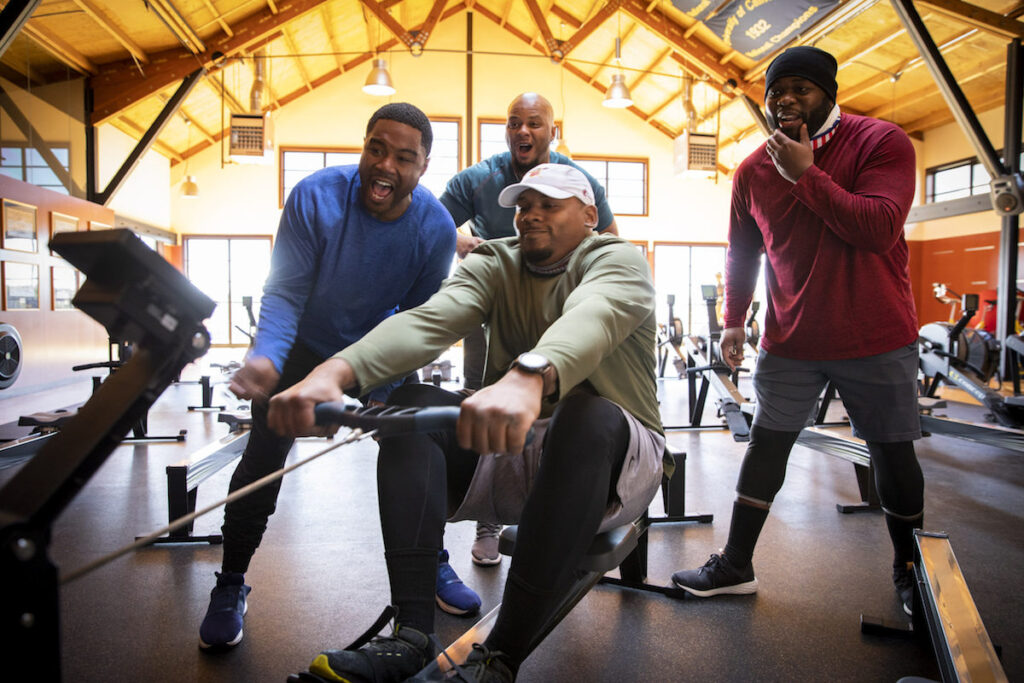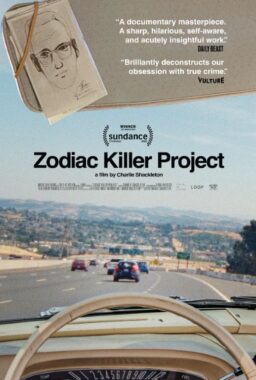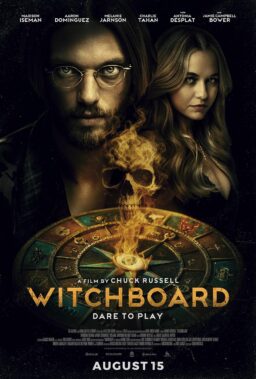In addition to being the publisher of Rogerebert.com, I wear the hat of a producer of film and television through Black Leopard Productions and Ebert Productions. There, I concentrate on films or projects by and about women, or on roles that empower women to step forward in a big way in the world to courageously fulfill their dreams and ambitions. Today I am presenting the stories of three such women who each found a different path to filmmaking, and to whom I offer support.—Chaz Ebert
MARY MAZZIO: DIRECTOR OF “A MOST BEAUTIFUL THING” and “I AM JANE DOE”
The idea for making “A Most Beautiful Thing” came about in the most unexpected way.
I bumped into an online tweet by Arshay Cooper, the captain of the first African-American high school rowing team in this country. He had written a self-published memoir, Suga Water, about his rowing team from the West Side of Chicago… and the tweet contained a link to Amazon.
I am, like most rowers, passionate about the sport, and immediately ordered it. I was excited about a story I had never heard of and a team I could not believe existed. There were people in my orbit, rowers, on the West Side of Chicago? How did I not know this?
Rowing, for the uninitiated, is a water sport that has existed since the beginning of time. We use long thin carbon fiber shells, which are powered by legs driving back a moveable seat, and arms hauling on an oar (or a set of oars). The racing distance is 2000 meters, somewhere between 5-7 minutes, and the amount of training to prepare for a race that starts with a sprint, settles to a near sprint, with a sprint at the end, is grueling. As a community, we rowers are like cross country runners, cross country skiers, all grit, all guts, all grind. No glory. No one in a boat is the star because you are only as fast as the weakest link. It is a quirky community with a singular shared trait. The appreciation for excruciatingly hard work, self-inflicted, that we all seem to love and all of us find meaning in the process.
Arshay’s book arrived and it was mesmerizing. His story was inspiring, devastating, funny, sad and hopeful, all in a single read. It was extraordinary that Arshay, the son of a mother who was struggling with generational trauma and addiction, the brother of gang members, found something special about the sport of rowing that changed his life. And the lives of his other teammates. The water provided a backdrop for who and what he could become. It was, as he wrote, “a place you could not hear the noise of the West Side… bullets, sirens… and that was a beautiful thing.”
I finished the book and tweeted: “Amazing story @ArshayCooper.” Within about 15 minutes, a tweet rocketed back my way through cyberspace. “Thx @MaryMazzio, let’s talk.” Before I could respond, my phone rang. It was Arshay Cooper.
“Would you ever consider…” the conversation began. Having read Arshay’s story and knowing the magnitude of who he could touch and inspire, I was all in. He had me at “Let’s talk.” No, actually, he had me at “Thx @MaryMazzio.”

My first introduction to the West Side began shortly thereafter. “Buckle up,” Arshay said. “Alvin and I are taking you on a ride-around, so that you can see the neighborhood.” Arshay and Alvin Ross, Arshay’s teammate and best friend, picked me up from the airport, gave me a baseball cap to jam on my head, and Alvin put “Walk Wit Me” written by Chicago hip-hop artist DA Smart on the radio.
“You need to hear this,” Alvin said, “it’s the story of our lives.”
We entered the West Side. The first thing Arshay pointed out was Mt. Sinai Hospital. “That’s the hospital DA Smart talks about. Anyone that goes there, goes to die. You never want to go there.”
As a person not from these neighborhoods, I was stunned by the geography of affiliated corners and pieces of neighborhoods. Different gangs ran different blocks, sometimes one block only, with the next block run by a rival gang. “How did you get to school having to cross so many different neighborhoods,” I asked.
Arshay paused. “That’s the point. It was never safe. You could barely get to school. If you passed through a neighborhood and they didn’t know you, you’d get jumped. That was every day at Manley High.”
Bearing witness to the topography of the West Side, to what young boys and girls face on a daily basis in these neighborhoods, the urgency of affiliating with a particular gang, for protection, for safety, became immediately apparent. It was a profound and stark reminder of the inequality of safety that children in low income areas face. And decisions they are forced to make at the ages of 10, 11, 12. Decisions that will have dramatic and long term consequences.
The project was then underway in what I thought would be a retrospective of an extraordinary story of young men from different neighborhoods and rival gangs, all coming together to row in a single boat. But the terrain began to shift in ways that only Arshay could make happen. A month or so later, one of the former coaches of this West Side team unexpectedly passed away. Mike O’Gorman, a former National Team coxswain, was one of the loudest, hilarious, obnoxious coxwains I had ever encountered back in my national team days. I knew Mike. And when I discovered that he was involved with this team from Manley High, I was surprised. “Was Mike ever offensive,” I asked Arshay. Arshay, the consummate diplomatic, said “Yes.” He paused, continuing: “He had no youth development skills but his heart was in the right place.” Alvin then chimed in. “Kind of.”

At Mike O’Gorman’s memorial, which was fittingly held at an Irish Bar in Philadelphia, Arshay and his teammates came to pay their respects. It was there that Arshay hatched his plan. He called me shortly thereafter. “We’ve decided to race again,” he said. “at the Chicago Sprints this summer.” The Chicago Sprints was the site of the first race, 20 years earlier, for this new team, and the race had not gone well. In fact, it was, in Arshay’s retelling, an epic disaster because the coxswain (the driver of the boat) happened to steer the shell right into a brick wall.
“I talked to the guys and we all want to do this, but for different reasons,”Arshay told me. “Pookie (the coxswain) wants a do-over, he wants to prove that he can steer without crashing into something.” We both laughed. And then Arshay went on. “Malcolm wants to race for his sons and Alvin wants to race to celebrate the fact that we survived the West Side, that we’re still alive.” He paused. “And you?” I asked. “Well, I think it’s important to show young African American boys and girls that there is another way out.” My heart quickened. And then he said, “I’m thinking of calling Mike Teti.”
Mike Teti, a 3-time Olympian, is the head men’s Olympic Team coach. Calling Mike Teti for pointers is like a lemonade stand owner calling Warren Buffet for help. But I loved that Arshay would pick up the phone and invite Teti to coach his come-back team. Now in their 30s, Arshay had rounded up Alvin, Preston Grandberry and Malcolm Hawkins to race in a men’s four. And Pookie Hawkins to cox. All they had to do was train.
Amazingly, Teti agreed to coach the team. What surprised me most about Teti, who is a big personality in the sport, is that he was quietly one of the Manley team’s first donors. I discovered this in tiny print, buried in a 1998 newsletter about this new Manley High rowing team. Things were starting to come full circle.
But Arshay’s leadership and exuberance did not end there. He had the guys rowing, weightlifting, running, grueling workouts, in order to prepare for this 1000-meter race. They had 6 months to get in shape and he was determined.
We began to visit Arshay and the team at the training camps that Arshay organized. As a former athlete, I was amazed by their dedication to a challenging training regimen. And stunned by their talent, even in their 30s. Malcolm Hawkins jumped on the ergometer one day, cranking off 200 meters at full tilt. After checking the record books, it turns out that at the age of 35, he had the 5th fastest American time (of any age) and would rank 15th in the world at that distance. Extraordinary.
But the come-back sports story was only one piece of this journey. Arshay called me after a series of interviews with his teammates and their mothers. The interviews included candid discussions about structural impediments; intergenerational trauma; the toxic relationship with law enforcement; and navigating neighborhoods like the West Side. “I’ve been thinking…” Arshay started. “What if I invited members of the Chicago Police Department to join us in the indoor rowing tanks? We can teach them how to row, and they can learn our names, get to know us.”
Ever the bridge builder, Arshay did just that. His teammates were a little more ambivalent about the concept but Arshay convinced them that such a visit by members of the CPD would be a good thing for them and a good thing for the City of Chicago. He organized a series of training sessions with the Chicago police and we showed up to film the first. The hair on the back of my neck stood on end as I witnessed this extraordinary interchange. In fact, I nearly cried behind the camera at the extraordinary kindness that Arshay and the guys showed these officers, patiently teaching them how to row, hands on hands, working together shoulder to shoulder. It was all the more riveting because Alvin and Preston, the team’s stroke seat, were intimately familiar with the criminal justice system, both having been previously incarcerated.

It was as if time and space stood still for two hours. By the end of the session, which admittedly, began uncomfortably, Alvin had suggested a picnic with the officers, and Arshay asked if the officers would like to race as part of the same team that summer. The encounter was surreal, and I think unexpected, for all who was there.
Fast forward to the race. The Chicago Sprints, a 1000-meter dash down the waterway in the middle of Chicago, the Lincoln Park Lagoon, was teeming with competitors from throughout the mid-west. And at the appointed time to race in a men’s eight, the most unusual entry pulled up to the starting line. Stroked by Preston, the combined Manley-CPD (Chicago Police Department) entry went cranking off the starting line, nearly centipede-like, as the officers were new to the sport…. An extraordinary assembly of unlikely people coming together.
And then the qualifying race for the men’s four. I had assumed that a group of 30-somethings, out of the boat for 20 years and just coming back together, would get their asses handed to them. Masters rowers that come to these races train religiously and are often finely-tuned athletes. My heart was in my throat as the starting flag went down. Arshay, Malcolm, Preston and Alvin were hauling on it – and they sprinted out to an early lead…extending that lead to a horizon by the 500-meter mark. I will not talk about what happened, but I can say this. Documentary filmmakers really should be fully unbiased, but to be honest, I could barely speak after that race, I screamed myself so hoarse.
These young men invited me into their world, into their realities, reminding me of our collective responsibility for the conditions we (the greater “we”) created and the long shadow of the trauma our ancestors inflicted upon a generation of African-Americans (some call it slavery but the violence endemic in the slave trade makes the term “slavery” almost quaint. The term really should be “domestic terrorism.)
This starting line of trauma was passed to future generations, reinforced in ways both large and small through redlining, racist policies of exclusion, police mistreatment and brutality, and the excruciating lack of investment for remediating those conditions the greater “we” are responsible for creating. That children suffer the sins of our forebears, living in third world conditions, in a first world nation, is inexcusable and people like Arshay are beacons of light, calling out truth to power, but also doing something about it.
If this project and Arshay’s message in this film can inspire children in neighborhoods like Arshay’s that something more is possible, then mission accomplished. But if this project can inspire thought leaders and legislators that we have much work to do to level the safety playing field for our children, then so much the better.
Let’s get to work, my friends….
“A Most Beautiful Thing” opens in select theaters beginning Friday, March 27th. For tickets and theater locations, click here.
Header photo caption: Malcolm Hawkins on location in Oakland. ©2019 Richard Schultz. Courtesy 50 Eggs Films











